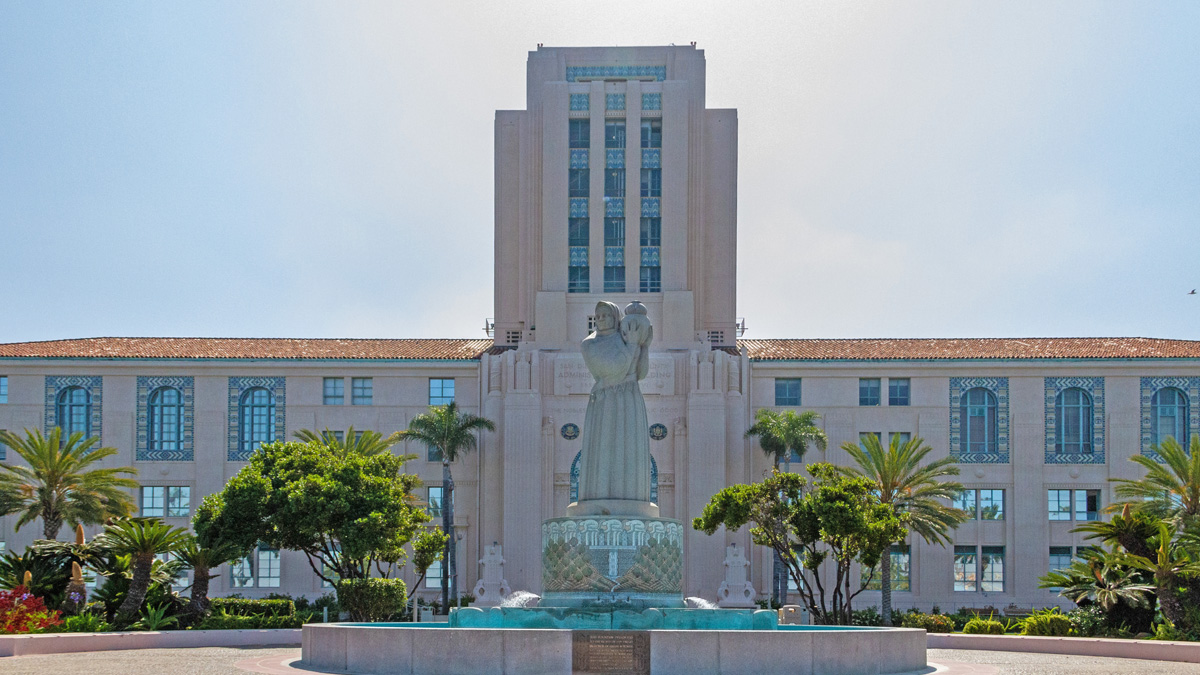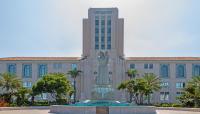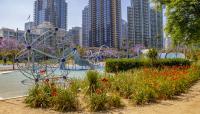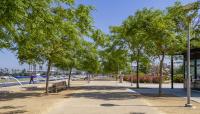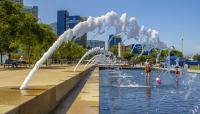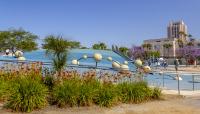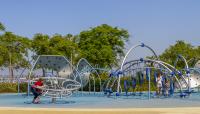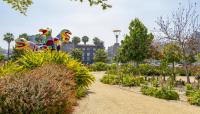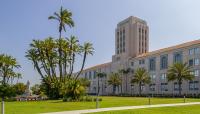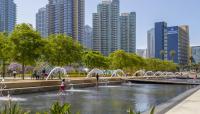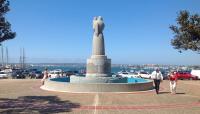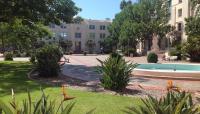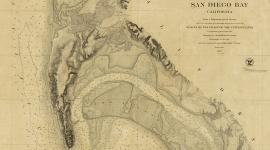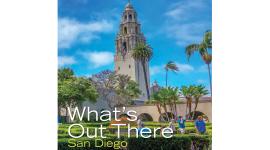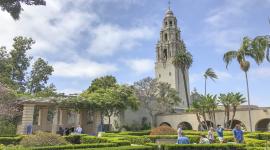Landscape Information
Built in 1938 on infilled tidelands, the San Diego Civic Center (now County Administration Center, or CAC) partially realized city planner John Nolen’s 1908 vision for a downtown waterfront core. With funding from the Works Progress Administration, landscape architect Roland Hoyt laid out the Beaux-Arts East Courtyard, a western plaza, and perimeter gardens planted with palm and tea trees. A section of the grounds was replanted as a victory garden during World War II, and as a water conservation garden in the 1960s. In 2014 the landscape was redesigned by Hargreaves Associates and Schmidt Design Group.
Bordered on three sides by rows of coast live oaks, the twelve-acre, linear park contains a playground, an open lawn that makes up the western half of the park, and two long wading pools that extend from the north and south sides of the CAC building. A colorful playground with sculptural play equipment and a bocce ball court is located above an underground parking structure. The northeast section contains a series of drought-tolerant gardens, winding pathways, and sculptures. Queen palm, jacaranda, tipu, and camphor trees are interspersed throughout the park. Significant portions of the 1939 landscape remain, namely the East Courtyard and plaza directly west of the CAC. Facing San Diego Bay, the western plaza features the granite Guardian of Water (1939) statue by local artist Donal Hord situated within a circular basin, six groupings of Senegal palm trees, and a panoramic view of an active waterfront. Shaded by mature trees, the formal entrance courtyard is bounded on both ends by two round fountains. The CAC was added to the National Register of Historic Places in 1988.




